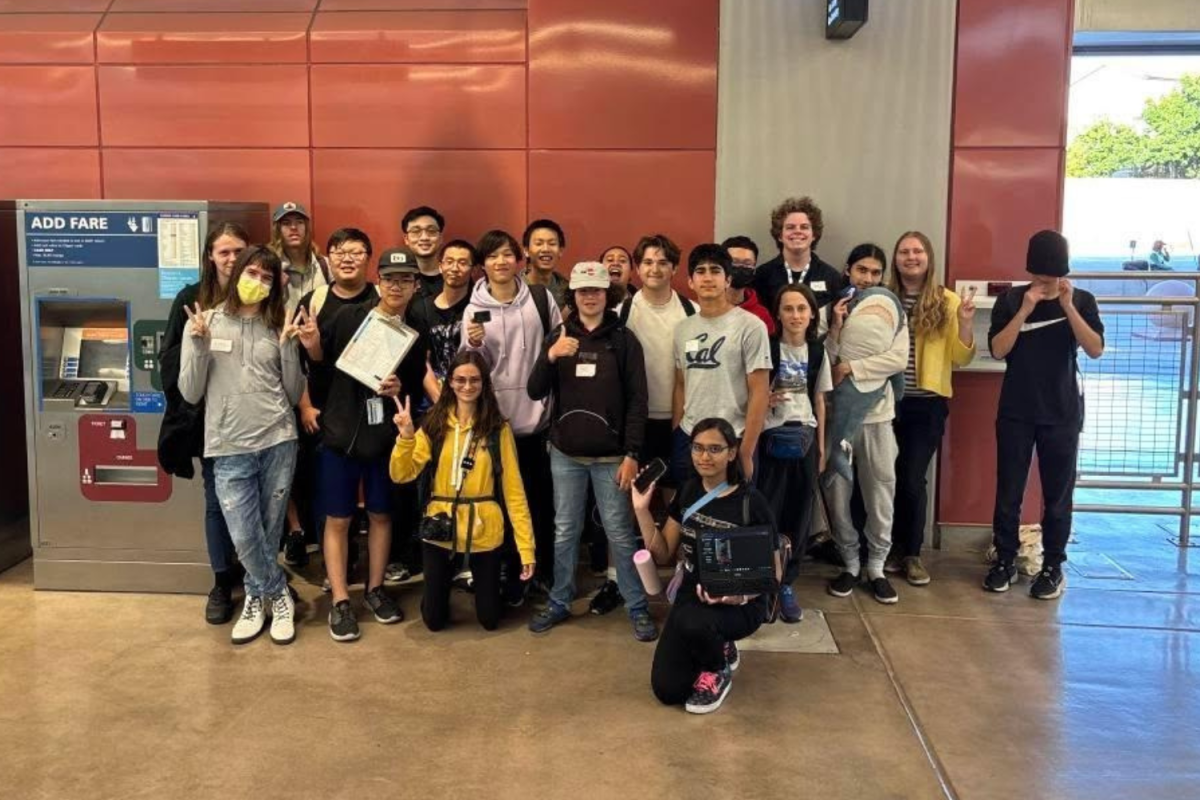The implicit barriers behind social media
Graphic illustration by Qianzi Loo
With the rise of social media, the lack of intergenerational connectivity online has intensified, leading to a more politically polarized society. Diversifying online experiences through the use of multiple platforms and perspectives can prevent further societal fragmentation and polarization.
April 10, 2023
Social media apps like Instagram and Tiktok are defined by their Generation Z users, while media outlets like TV and newspaper are characterized by their Baby Boomer counterparts. With the rise of global communication platforms, the lack of intergenerational connectivity online has intensified, leading to a more politically polarized society. Diversifying online experiences through the use of multiple platforms and perspectives can prevent further societal fragmentation and polarization.
Generation Z almost exclusively uses modern social media apps like Tik Tok and Instagram as their primary source of information. According to the PEW Research Center, about a quarter of U.S. adults under the age of 30 regularly get their news from Tik Tok. Overall, news consumption has shifted from more traditional sources to social media. While it is convenient to get information on current events and fashion trends from these apps, it can also lead to the creation of media echo chambers, which confines users to a certain viewpoint. Users are often spoon-fed content on the same subject, as social media echo chambers cater to what the user interacts with and serves them recycled content. For example, if a student views content on global warming, their recommended pages will have content relating to the subject. This content will continue to breach into a user’s recommended pages and will reinforce their stance on the subject.
“I get a lot of related content on my TikTok feed,” junior Carlynda Gao said. “It is scary how the platforms I use know what I do and don’t like.”
Rather than relying on these given sources, media users should consider using other platforms, including credible sources such as research databases, Google Scholar, or news outlets, to get accurate information and prevent getting stuck in their personalized echo chambers. Using different forms of media can also bridge intergenerational differences, as users will be given the chance to explore unbiased and different perspectives and understand the topic from another person’s point of view. However, it is hard to change platforms when comfortability and normality is at stake. Inevitably, people stick to what they are most used to. Branching out requires effort which can be difficult to muster when there is no apparent need to explore different platforms.
“It’s inherent that we stick to what we are used to,” librarian Amy Ashworth said. “People always say ‘why fix it if it’s not broken,’ because if that media is good for you so far then there’s reluctance to change.”
Understanding all sides to a story can create more well-rounded and educated media users and can also lead to more constructive conversations with others.
“I like to cross-check my information with many sites to make sure I get the full picture on anything,” freshman Ranganathan Srinivasan said. “It is better to use many sites because you never know what app has data on your preferences.”
Sticking to one source of media can create more narrow-minded perspectives, which can create more harm. People might be receiving information that may be untrue and half the story, which creates clouded judgment.
“You are often blinded from reality. You are probably going to get your information wrong at some point in time,” Ashworth said.
To promote unity online, it is important to bridge the gap between different age groups and the apps that are used. While each person may possess a different perspective, consuming media from a variety of sources can ensure fluidity between generations and promote connectivity. Parents and students alike should rely on sources that are beyond current and familiar trends to ensure that information is accurate.



































































